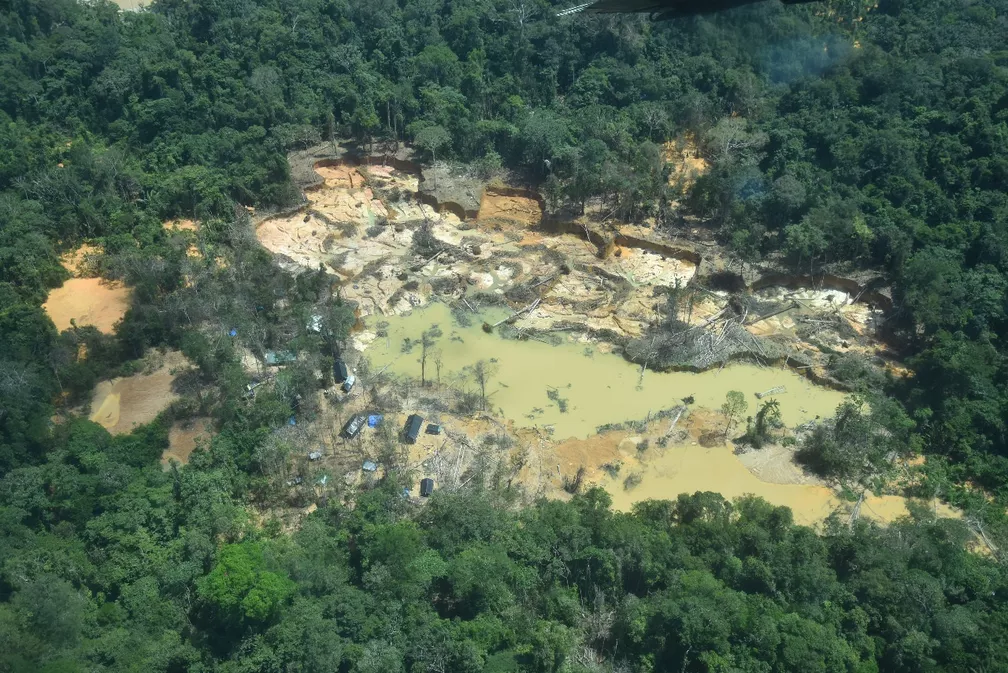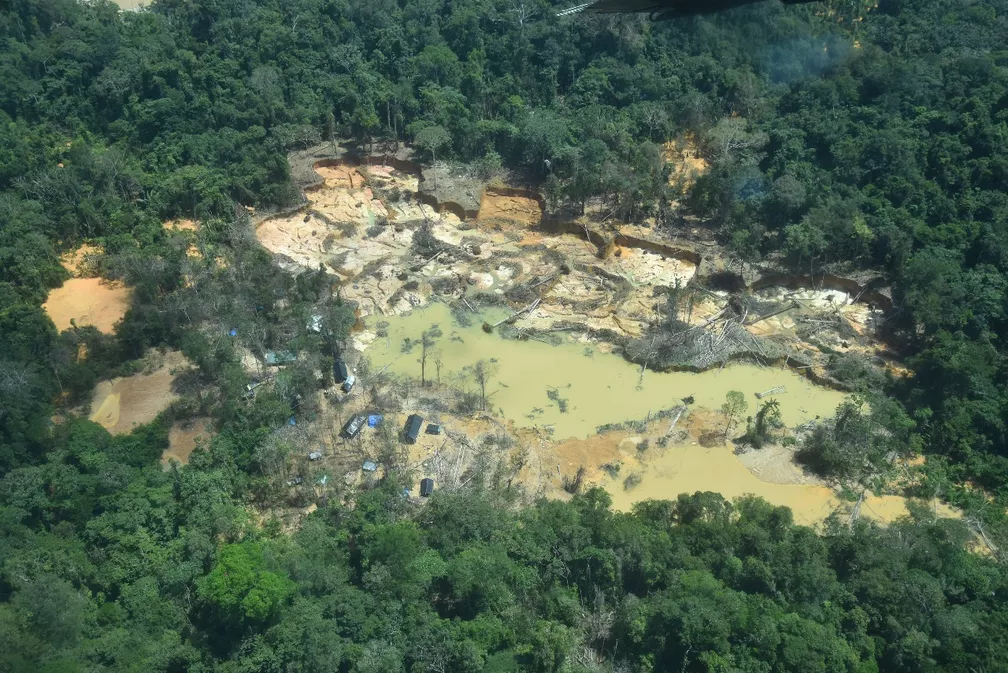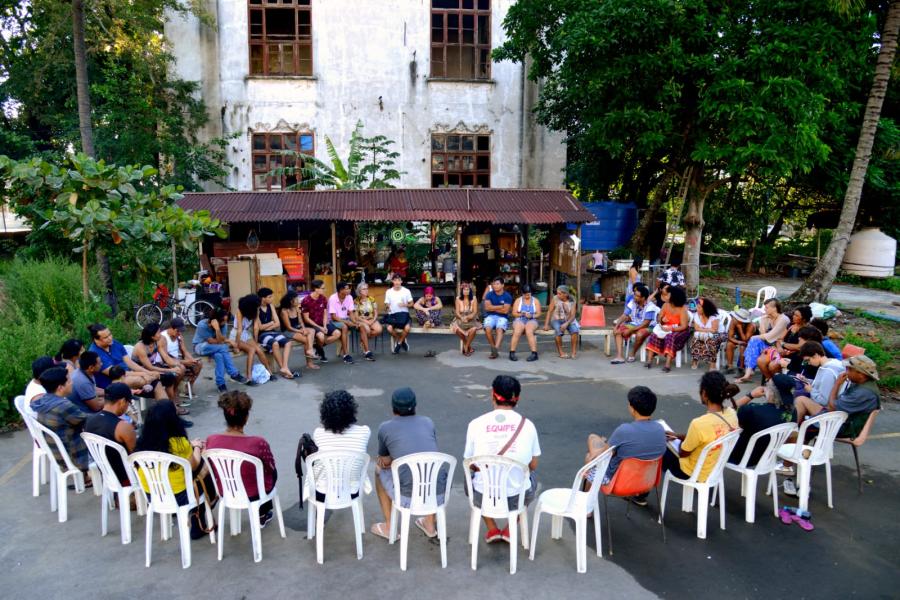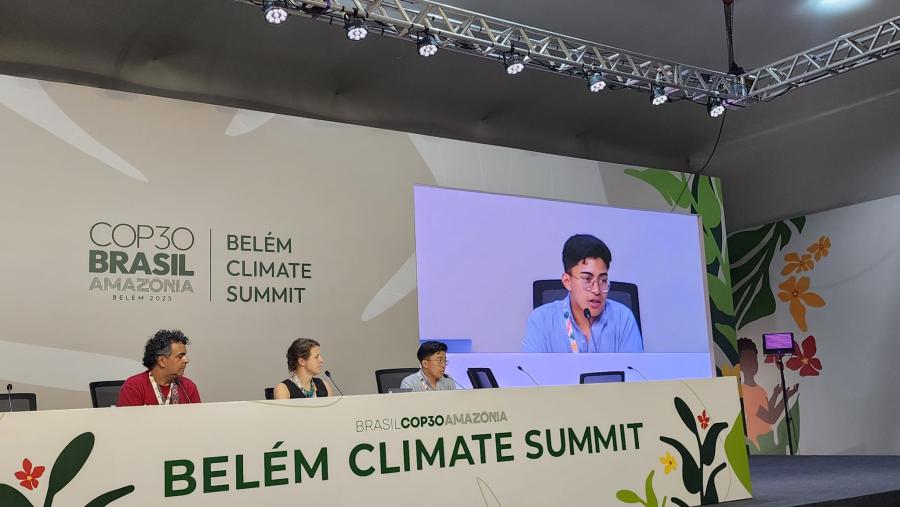
By Edson Krenak Naknanuk
In the last three months, while the COVID-19 pandemic was ruthlessly infecting people in Brazil, especially the most vulnerable populations, another battle was also being fought: that of access to information. As of July 8, 2020, official statistics say that more than 1.7 million Brazilians have contracted the coronavirus, and more than 64,000 have died as a result of COVID-19.

While we try to understand and fight this invisible enemy, in Brazil four sources were used to design the graphic of the worst pandemic of the 21st century (see the graphic below). The first of them is the portal Coronavirus Panel run by the federal government. The other two are initiatives by the State Health secretariats, and a consortium of press agencies and institutes - both launched in mid-June, when the federal government interrupted the disclosure of data for a few days, causing doubts from several experts about the accuracy of the numbers coming from official agencies. The fourth consortium comprises APIB -- Articulation of Indigenous Peoples of Brazil (the largest Indigenous association in Brazil), NGOs, Indigenous organizations, and Indigenous communities themselves. For some weeks, the Brazilian government tried to hide the rising numbers (see the graphic), but after the resignation of two health ministers, the acting officer for the post changed the conduct (Brazil still does not have an officially appointed minister of health).
Source: https://covid.saude.gov.br/
After these battles, in the last two weeks, the four sources seem to have diminished the discrepancy in the pursuit of truth. Today, there are very few differences between them. Still many problems remain in the way each source counts the numbers. Official organizations tend to under-report, increasing doubts about the reliability of the numbers impacting actions and policies. Indigenous organizations and their allies, closest to the communities, not only closely follow all the possible cases, but also have been fighting a struggle to decolonize, inform, and humanize the statistics. The death counts mainly encompass the elderly, leaders, shamans and important personalities in the villages. The impact is much greater than the statistics show. There are large cultural and symbolic impacts on Indigenous communities which go beyond economic and social.
When our leaders die, our people become orphans. When our elders die unexpectedly without farewell rituals, it is like whole libraries of knowledge are burned. When our shamans and warriors are gone, our cultural practices and forms of communal life cease to exist. Mourning is denied and farewell rituals have been interrupted. The violence to our Peoples is absolute.
The great farewell ceremony of the Quarup Peoples in the Amazon was cancelled for the first time in centuries. A whole world of meanings and elaboration of significance was suspended and neutralized. At home, death is no longer just a host.
When I started writing this text, 9 Xavante had just died of COVID-19. Less than a week has passed and the number has shot up to 21. The Xavante are the fourth most populous Indigenous People in Brazil. About 23,000 people live in the eastern region of Mato Grosso. Xavante leaders and wisdom keepers have been left almost abandoned in hospitals, alone, without family or friends.
The numbers of Indigenous people killed by COVID-19 are not precise or accurate due to two reasons. Underreporting is a State practice and in many places the government is the only means of contact outside Indigenous lands. Another reason is that the Brazilian government, going back at least 100 years, had decided to consider only the people who live in their traditional lands as Indigenous. This causes a profound impact because more than 40 percent of traditional lands are not demarcated, and are still being invaded and extracted by agribusiness, mining, and the timber industry. Also urban Indigenous populations are no longer being counted during the pandemic. The demographic data in Brazil on Indigenous Peoples is incomplete and imprecise, undermining and denying the right to self-determination to many.
Why Are So Many Isolated Indigenous Peoples Infected?
The answer is simple. Bolsonaro government’s frightening policies. Since the first day his government took power, the number of invasions on Indigenous lands, murders of Indigenous leaders, and illegal operations mainly in the Amazonian forests have skyrocketed. Just this week, on July 8, 2020, Bolsonaro vetoed provisions of a law requiring the federal government to provide drinking water, disinfectants, and a guarantee of hospital beds to Indigenous communities.

Army identifies illegal Yanomami shackles and miners in Roraima - Photo: Brazilian Army.
The Federal Public Ministry and the Brazilian Army denounced a few days ago the presence of more than 20,000 miners in the TIY (Yanomami Indigenous land whose current population is 26,780), as well as raised concern about the Yanomami social and immunological vulnerability. Measures of urgency are required and must be granted, under penalty of non-compliance with the provisions of Article 231 of the Federal Constitution, which recognizes the right of Indigenous Peoples to the lands they traditionally occupy. In addition to the garimpeiros (illegal miners), countless illegal deforestation operations, gold miners contaminating the rivers, and unconscionable missionary activities complete the long list of genocidal policies. The invasions are motivated by the government's anti-Indigenous discourse promoted since Bolsonaro`s election campaign.
Why Are Indigenous Peoples Infected and Dying So Rapidly?
In the 100 days of pandemic in Brazil, the new coronavirus has already killed 446 Indigenous people, infected more than 9,000 individuals and reached 115 Peoples, according to a survey by the Articulation of Indigenous Peoples of Brazil (APIB). The age-adjusted COVID-19 mortality rate for Indigenous people in Brazil is 5 times as high, with 40 deaths per 100,000 inhabitants, while for the general population it is 24 per 100,000.
The factors that discussed above, such as lack of access to accurate information in Indigenous languages, the nature of COVID-19 pandemic, and the invaders on our lands, with the systematic deterioration of Indigeneous institutions, have worsened the situation and undermined Indigenous rights. FUNAI has invested only 27 percent of resources for combating the pandemic specifically for at Indigenous Peoples, according to the newspaper O Estado de Sao Paulo. The lack of actions is therefore not a consequence of the lack of financial resources.
Another indication of the virus’ seriousness in Indigenous territories and how the State is tackling it is that 48 percent of Indigenous people who seek hospital care end up dying, making up the highest proportion in the country, according to a study by Fiocruz. This is a stark portrait of the Bolsonaro government's policies for Indigenous Peoples.
Indigenous Peoples Accuse the Bolsonaro Government of Genocide
Last week, an action was filed in the Supreme Court against the federal government, demanding measures to protect Indigenous Peoples from the COVID-19 pandemic. The legal petition is authored by APIB in conjunction with political parties, five Indigenous lawyers, and other non-Indigenous attorneys. The action aims "to adopt the measures listed at the end, aimed at equating serious injuries to the fundamental precepts of this Constitution, related to failures and omissions in combating the epidemic of the new coronavirus among Indigenous Peoples in Brazil.”
According to a report,"The Threat of COVID-19 and the Risk of Genocide of Indigenous and Isolated Peoples" by the Observatory of Human Rights of Isolated Indigenous Peoples and Recent Contact - OPI, “Even before the pandemic, the epidemiological vulnerability of isolated Indigenous Peoples and recent contact was already a worrying factor. More vulnerable to viral infections, they would be exposed to all the situations reported above, but with greater risk. According to studies, some Indigenous lands are pointed out as the most vulnerable in Brazil for contamination by the COVID-19, such as the Yanomami, Vale do Javari and Alto Rio Negro Indigenous lands... And worse, besides the precarious situation of the health system, the vulnerability of those Peoples intensifies with the increase of invasions and environmental degradation as in the rest of Brazil. This is because practically all of the life resources of these Peoples are connected to the territory. Without the exclusive enjoyment of their territories it is impossible to survive in health.”
In addition to the extensive environmental damage to Indigenous territories and invaders as disseminators of COVID-19, the violations of the right to health and the right to isolation during the pandemic is endangering the survival of entire Peoples. The Uru-Eu-Wau-Wau Indigenous Territory, located in the central region of Rondônia, west of the Amazon, demarcated by Decree No. 275 of October 29, 1991, is now facing those threats. Countless other Peoples live there, such as the Oro Win, survivors of a August 1963 massacre organized by illegal rubber tapper Manoel Lucindo da Silva, later denounced in 1978 and condemned in 1994 by the jury for the crime of genocide.
The risk is of genocide is a warning coming from Indigenous organizations, the national and international media and various international bodies and institutions. The legal action document demands several actions including:
⦁ Immediately take all necessary measures to withdraw invaders from all Indigenous lands, especially Yanomami, Karipuna, Uru-Eu-Wau-Wau, Kayapó, Araribóia, Munduruku and Trincheira Bacajá Indigenous Lands;
⦁ Install and maintain sanitary barriers to protect Indigenous lands where isolated and recently-contacted Indigenous Peoples live;
⦁ Create a protocol committee during the COVID-19 pandemic for decision making and monitoring. The committee should be composed of Indigenous representatives, Indigenists, interdisciplinary medical teams, and Indigenous organizations to protect isolated Peoples or those in recent contact.
⦁ Determine that SUS Indigenous Health Subsystem services be provided to all Indigenous people in Brazil, including those who do not live in traditional territories, or who inhabit areas that have not yet been definitively demarcated.
Indigenous people are defending themselves with creative and effective actions, but they are unable to make progress due to an ineffective State that refuses to develop any initiative for Indigenous Peoples. Although Indigenous Peoples are a minority in Brazil, they protect an immense area of biodiversity which holds an inestimable value for all human beings. They do so because they dream of a land that is the safe home for all human beings, as the eternal words of our Yanomami leader, David Kopenawa from his book The Fall of Heaven: Words of a Shaman, ring true:
"I would have liked to have said to the whites, already in the time of the highways:
'Never come back to our forest! Your xawara epidemics have already devoured here
enough of our parents and grandparents!
We don't want to feel that sorrow again!
Clear the way! We don't want your trucks! Away from
our land!'.
But I didn't dare address them.
I was still young
too much and I had little knowledge.
I didn't know what it was like to defend the forest.
I didn't know how to make my voice heard in the cities.
It was only later, after the road tore through the forest, when
I started to think deeper.
Then, I began to dream every time more with the forest
that Omama has created for us and, little by little,
his words increased and strengthened within me."
-- Edson Krenak Naknanuk is an Indigenous activist and writer, a PhD student at Vienna University, and a Cultural Survival consultant. @edsonkrenak





